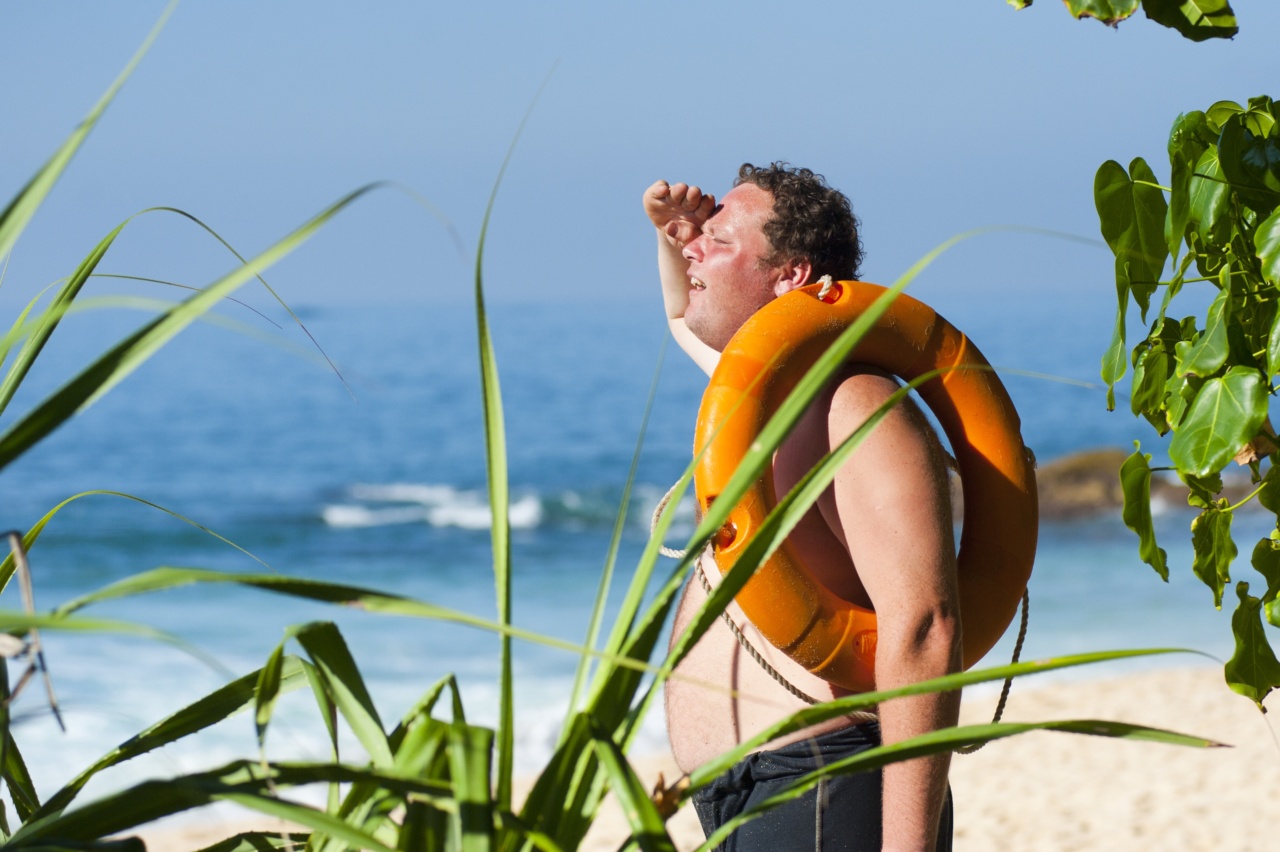Summer is here, and along with it comes the scorching sun. While sunshine can be a source of joy and vitamin D, it can also be a culprit behind sunburn.
Sunburn occurs when the skin is exposed to excessive ultraviolet (UV) radiation, typically from the sun. It can range in severity from mild redness and irritation to severe pain, blistering, and peeling.
The Science behind Sunburn
To better understand how to treat sunburn, it’s important to grasp the science behind it. The sun emits different types of radiation, including UV-A, UV-B, and UV-C.
Luckily, the Earth’s atmosphere blocks the majority of UV-C rays, but UV-A and UV-B rays still reach the Earth’s surface.
UV-A rays penetrate deeper into the skin and are primarily responsible for skin aging, while UV-B rays are the ones that cause sunburn. When the skin is exposed to UV-B rays, they penetrate the outermost layer of the skin, known as the epidermis.
This triggers an immune response to repair the damage caused by the UV radiation.
Risk Factors for Sunburn
While anyone can get sunburned, certain factors can increase your risk. These include:.
- Fair skin: People with fair skin have less melanin, the pigment responsible for providing some protection against UV radiation.
- Excessive sun exposure: Spending prolonged periods in the sun without adequate protection increases your chances of getting sunburned.
- High altitude or proximity to the equator: Being at higher altitudes or closer to the equator means you are exposed to more intense UV radiation.
- Medications and skin products: Certain medications and skincare products can increase your skin’s sensitivity to the sun.
- Previous sunburns: If you’ve experienced sunburn in the past, you’re more likely to get burnt again.
The Effects of Sunburn on the Skin
Sunburn not only causes short-term discomfort, but it also has long-term effects on the skin. The immediate symptoms of sunburn may include:.
- Redness and inflammation of the skin
- Warmth and tenderness in the affected area
- Pain or discomfort
- Blisters and peeling
However, repeated sunburns can lead to more serious consequences.
Over time, unprotected exposure to the sun can accelerate skin aging, cause wrinkles, age spots, and increase the risk of developing skin cancer, including melanoma, the deadliest form of skin cancer.
Treating Sunburn
When it comes to treating sunburn, the goal is to relieve pain, reduce inflammation, and promote healing. Here are some helpful tips to alleviate the discomfort caused by sunburn:.
H2: Cool Compresses and Cold Showers
Applying cool compresses or taking cold showers can help soothe the burning sensation associated with sunburn. The cool temperature constricts blood vessels, reducing swelling and inflammation.
H2: Hydrate, Hydrate, Hydrate
One of the most important things you can do when you have sunburn is to stay hydrated. Sunburn draws fluid to the surface of the skin, which can lead to dehydration.
Drink plenty of water and avoid alcohol or caffeinated beverages, as they can further dehydrate your body.
H2: Moisturize Your Skin
Applying a gentle, non-irritating moisturizer can help lock in moisture and prevent excessive dryness and peeling.
Look for products containing aloe vera, hyaluronic acid, or chamomile, as they have soothing and hydrating properties that can provide relief.
H2: Over-the-Counter Pain Relievers
If you’re experiencing discomfort or pain, over-the-counter pain relievers like ibuprofen or acetaminophen can help. However, always follow the recommended dosage and consult a healthcare professional if you have any concerns.
H2: Avoid Sun and Seek Shade
While it may seem obvious, it is crucial to avoid further sun exposure when you have sunburn. Stay indoors or seek shade until your skin has had a chance to heal.
If you do need to go outside, make sure to protect your skin with clothing, a wide-brimmed hat, sunglasses, and sunscreen with a high SPF.
H2: Natural Remedies
In addition to traditional treatments, some natural remedies can help relieve sunburn symptoms. Here are a few options:.
- Aloe vera gel: Known for its soothing properties, applying aloe vera gel to sunburned skin can help reduce inflammation and promote healing.
- Cold milk compress: Dipping a clean cloth in cold milk and applying it to the affected area can provide relief from pain and inflammation.
- Green tea: Applying cool, brewed green tea to sunburned skin can provide antioxidants and help reduce inflammation.
- Oatmeal bath: Taking a lukewarm bath with colloidal oatmeal can soothe sunburned skin and relieve itching.
Preventing Sunburn
Prevention is always better than cure, and this is especially true when it comes to sunburn. Here are some effective strategies to protect your skin from harmful UV radiation:.
H2: Apply Sunscreen
Always apply sunscreen with a high sun protection factor (SPF) before going outdoors, even on cloudy or overcast days. Choose a broad-spectrum sunscreen that protects against both UVA and UVB rays.
Apply generously and reapply every two hours or after swimming or sweating excessively.
H2: Seek Shade
When the sun’s rays are strongest, usually between 10 a.m. and 4 p.m., seek shade under trees, umbrellas, or use a sunshade or sun-blocking canopy if you’re at the beach or pool.
H2: Wear Protective Clothing
Cover up exposed skin by wearing long-sleeved shirts, long pants, and a wide-brimmed hat. Additionally, consider wearing sunglasses with UV protection to shield your eyes from harmful rays.
H2: Be Sun-Smart
Limit your sun exposure, especially if you’re particularly sensitive to the sun or have a fair complexion. Take breaks in the shade, use sun-protective clothing and accessories, and regularly check the UV index provided by weather reports.
When to Seek Medical Attention
In most cases, sunburn can be effectively treated at home. However, there are instances when medical attention is necessary. If your sunburn is severe and accompanied by the following symptoms, it is advisable to consult a healthcare professional:.
- Fever and chills
- Severe pain or discomfort
- Headache, nausea, or vomiting
- Dizziness or confusion
- Faintness or rapid pulse
- Signs of infection (e.g., increasing redness, pus, or fever)
It’s important to note that sunburn can be easily prevented by taking necessary precautions and protecting your skin from excessive UV radiation.




























